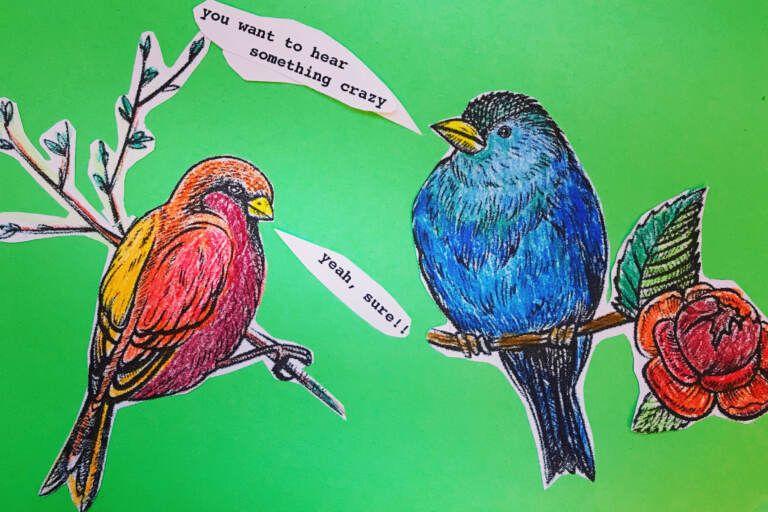The Building Blocks of Language
Listen 48:51
(art by Maiken Scott)
Language is how we connect — to each other, to the past, to the future — how we create culture, communicate ideas, and make decisions. Scientists are keen to discover more about how language works, and how we actually learn to talk. On this episode — why do some species have language, and others don’t? What can bird whistles teach us about the mechanics of language? What happens when the ability to communicate is disrupted? Also, a look at language itself, and how the internet is changing the way we communicate.
Also heard on this week’s episode:
- We listen back to a story about aphasia reported by Elana Gordon. The neuroscientist she interviewed, Roy Hamilton, is currently studying the use of Transcranial Magnetic Stimulation to help people with post-stroke aphasia. This is a large, clinical trial supported by the NIH. You can find more information here.
- Language is changing faster and faster thanks to the internet. We talk with linguist Gretchen McCulloch about how those changes are happening, and how she keeps up. Gretchen is the author of “Because Internet: Understanding the New Rules of Language.”
Segments from this episode
WHYY is your source for fact-based, in-depth journalism and information. As a nonprofit organization, we rely on financial support from readers like you. Please give today.






